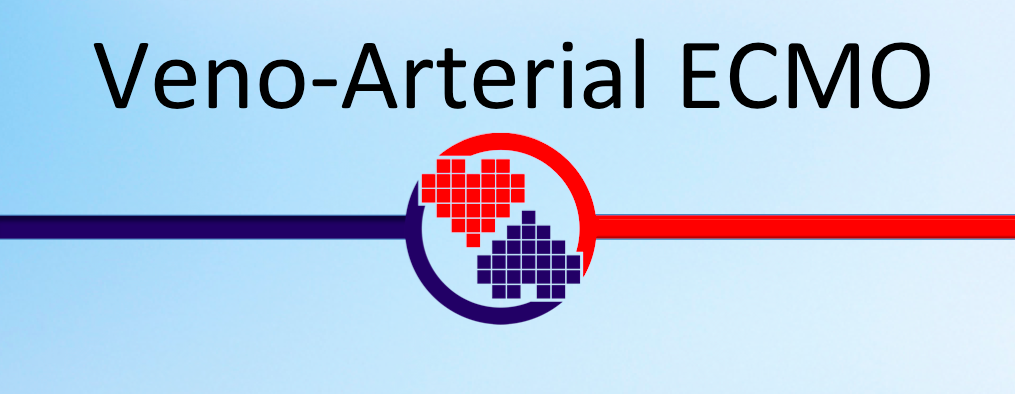V-A ECMO is used provide both circulatory and gas exchange support. It is considered in patients with severe cardiac failure or combined cardiac and respiratory failure refractory to inotropes, intra-aortic balloon counterpulsation and mechanical ventilation.
V-A ECMO is very similar to cardiopulmonary bypass use during cardiac surgery and can be considered as longer term cardiopulmonary bypass. It may be used at low flows (2-3 L/min) as partial assistance to native cardiac output or at higher flows (4-6 L/min) completely replacing native cardiac output. In V-A ECMO the interaction between ECMO flow and native cardiac output determines the patient’s effective perfusion.
Cannulation & Circuit Configuration
V-A ECMO may be applied via central or peripheral cannulation. Central cannulation occurs involves accessing the great vessels directly via a sternotomy and will not be discussed in detail here. Peripheral V-A ECMO is commonly applied by accessing the femoral artery and vein either surgically or percutaneously using Seldinger technique. Blood is drained from the inferior vena cava, passes through the oxygenator and is then returned to the descending aorta in a retrograde fashion.
In peripheral V-A ECMO any residual native cardiac output passes through the patient’s lungs. If the lungs are badly affected by pathology or mechanical ventilation is inadequate the blood of the residual cardiac output may remain significantly hypoxic as it enters the systemic circulation. Anatomically, this blood is preferentially delivered to the circulation of the heart, head and neck and right arm. Therefore, when there is residual native cardiac output and the lungs are not ventilated normally, potential exists for delivery of hypoxic blood to the coronary, cerebral and right arm circulations. This is termed differential hypoxia or harlequin syndrome.
For this reason, any patient on peripheral V-A ECMO should have oxygen saturation monitoring on the forehead the ear lobe or the right finger. If a significant difference is detected between pulse oximetry of the head and neck /right arm and pulse oximetry elsewhere, differential circulation should be suspected.
Indications
Profound unresponsive shock from:
- Myocarditis
- Myocardial infarction
- Pulmonary embolism
- Drug overdose
- Cardiomyopathy
- Primary graft failure post heart transplant
- Bridge to heart transplantation or VAD
- Post cardiotomy (outcome often poor)
Contraindications
General
- Age: > 70 years
- Active malignancy
- Severe brain injury
- Previous Bone marrow transplant
- Previous heart, lung, renal transplant (>30 days)
- AIDS defining illness despite antiretroviral therapy
- Cirrhosis
- End-stage renal failure (dialysis)
Specific Contraindications to V-A ECMO
- Aortic dissection
- Severe aortic regurgitation
- Multiorgan failure




